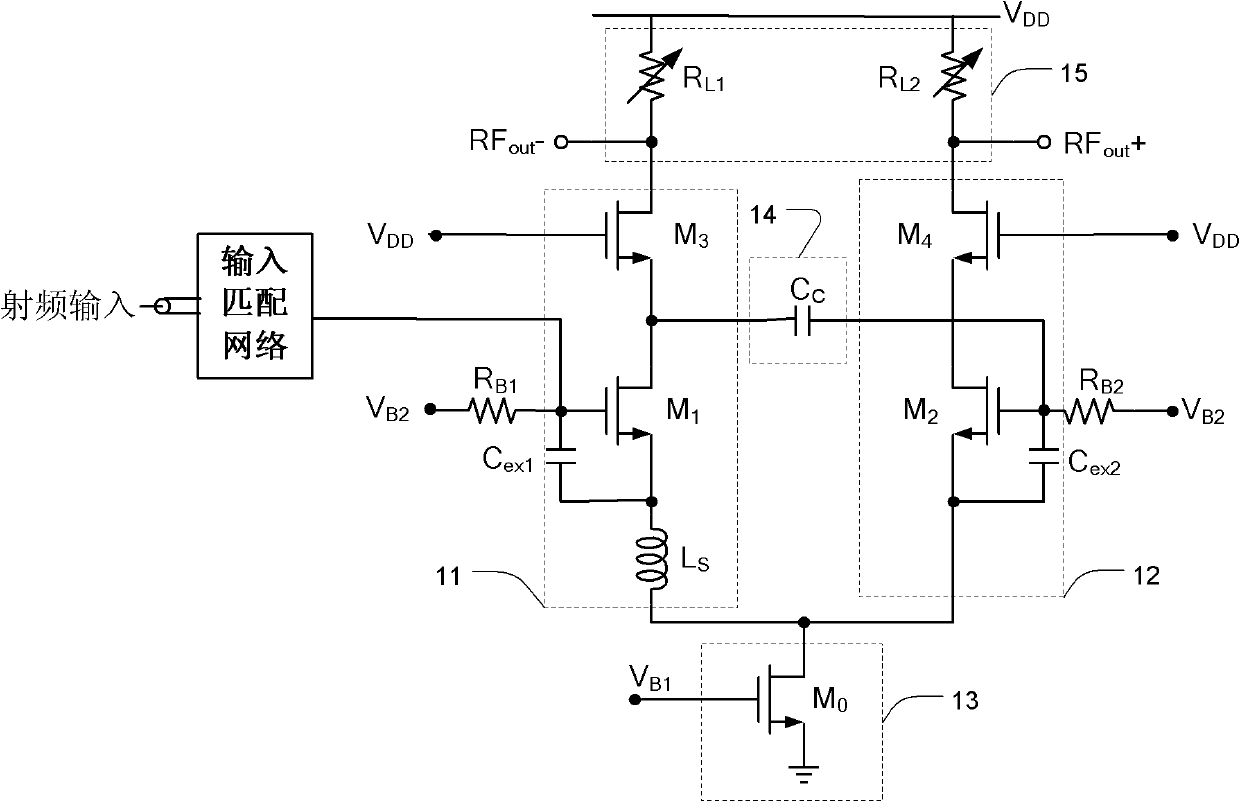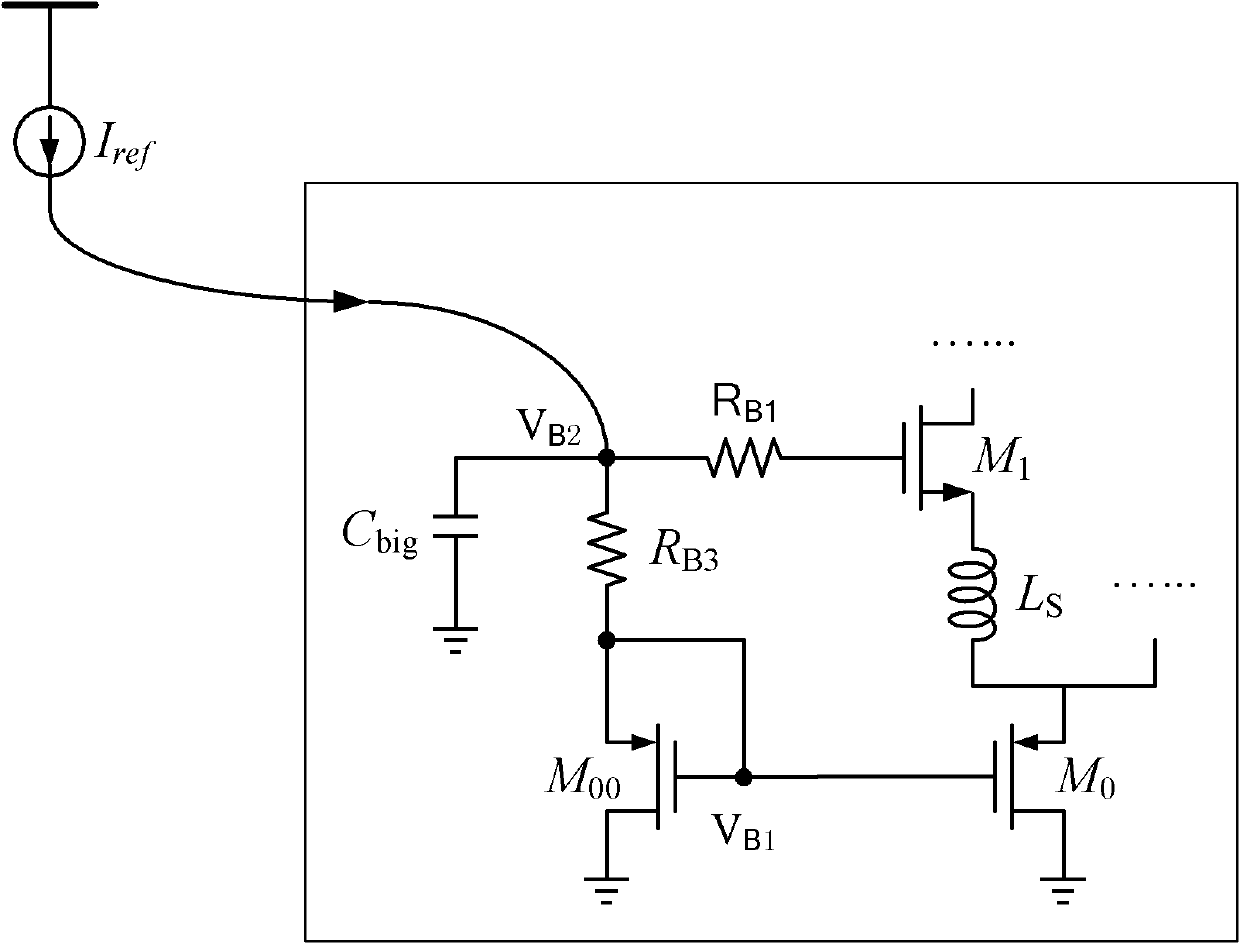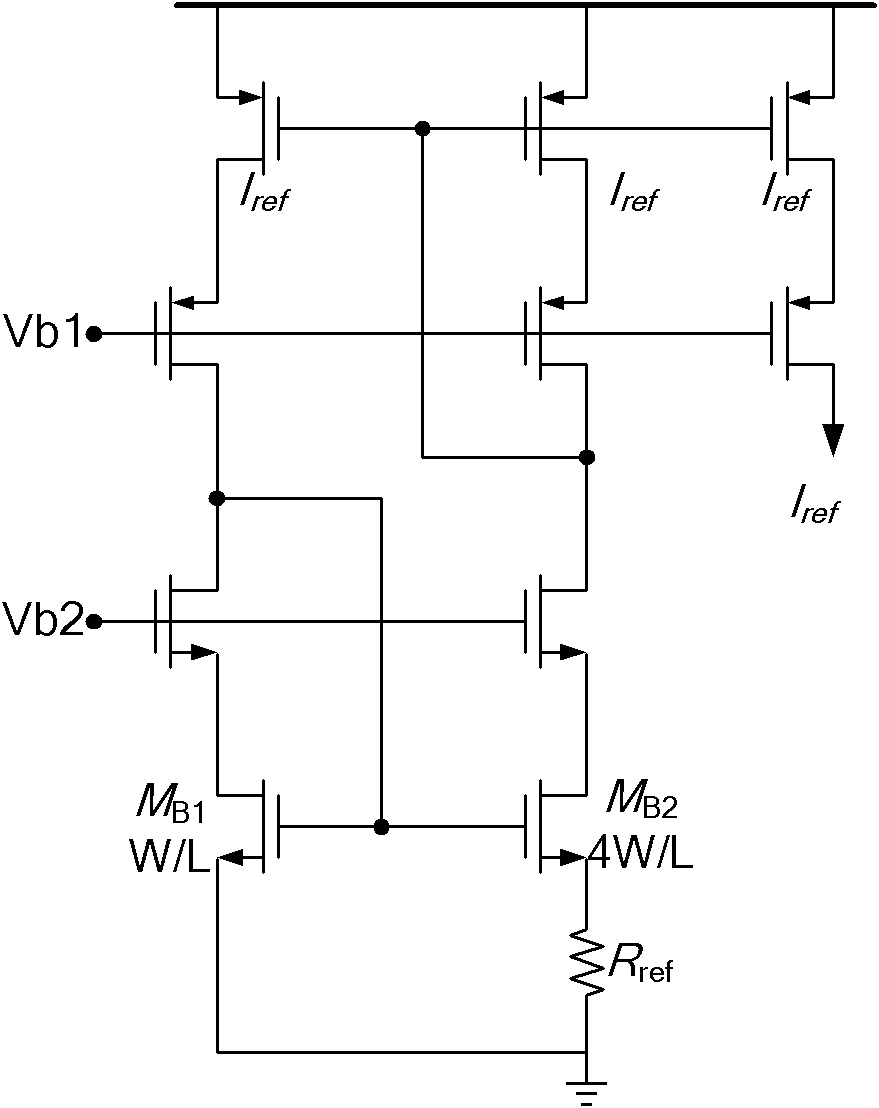Low-noise amplifier adopting single-ended input and differential output
A low-noise amplifier, differential output technology, used in differential amplifiers, DC-coupled DC amplifiers, and improved amplifiers to reduce noise effects, etc., can solve the problems of difficult to achieve differential symmetry for RF signals, and difficult to increase the inductance value of plane inductance. , to achieve the effect of improving the differential symmetry
- Summary
- Abstract
- Description
- Claims
- Application Information
AI Technical Summary
Problems solved by technology
Method used
Image
Examples
Embodiment Construction
[0016] see figure 1 The low noise amplifier with single-ended input and differential output of the present invention includes: an input matching network, a first circuit 11, a second circuit 12, a tail current source tube circuit 13, a compensation circuit 14, a bias circuit and an output matching network 15.
[0017] The input impedance of the input matching network is determined based on the devices to which the low noise amplifier is connected. For example, the device connected to the low noise amplifier is a surface acoustic wave filter, and the input impedance provided by the input matching network matches the output impedance of the surface acoustic wave filter, for example, 50 ohms. Since the input matching network is already known to those skilled in the art, it will not be described in detail here.
[0018] The first circuit 11 includes at least one first field effect transistor, the input end of which is connected to the output end of the input matching network, and...
PUM
 Login to View More
Login to View More Abstract
Description
Claims
Application Information
 Login to View More
Login to View More - R&D
- Intellectual Property
- Life Sciences
- Materials
- Tech Scout
- Unparalleled Data Quality
- Higher Quality Content
- 60% Fewer Hallucinations
Browse by: Latest US Patents, China's latest patents, Technical Efficacy Thesaurus, Application Domain, Technology Topic, Popular Technical Reports.
© 2025 PatSnap. All rights reserved.Legal|Privacy policy|Modern Slavery Act Transparency Statement|Sitemap|About US| Contact US: help@patsnap.com



